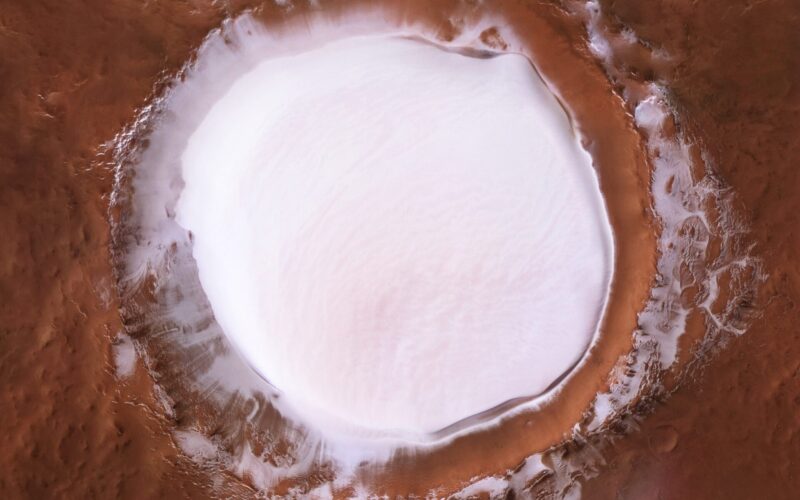A group of researchers, including a NASA scientist and experts from other institutions, has recently confirmed that icy regions in the mid-latitudes of Mars might be able to support life.
A study, released by the scientists on October 17, 2024, reveals that there are areas on Mars where life could theoretically exist. These areas are found at depths of a few centimeters in ice with 0.01–0.1% dust and can reach several meters in cleaner ice.
Mars lacks a strong ozone layer, which lets 30% more harmful ultraviolet radiation hit its surface compared to Earth.
The analysis shows that, even though Mars has stronger ultraviolet radiation on its surface compared to Earth, there are spots in exposed ice on Mars where Earth’s photosynthetic organisms could thrive due to good solar conditions.
Numerical models predict that thick, dusty snow in the middle latitudes of Mars may melt beneath the surface.
Therefore, if there are small amounts of liquid water at these depths, areas where ice is exposed in the mid-latitudes might be the “most easily accessible locations to search for extant life on Mars,” according to the study.
Microbial habitats are commonly found in the shallow layers beneath ice sheets, glaciers and lake ice on Earth. Typically, these habitats develop because dark dust and sediment on the ice surface absorbs more sunlight than the ice around them. This extra heat causes the ice to melt, creating holes.
Many types of organisms live in the shallow subsurface areas of terrestrial ice, including cyanobacteria, chlorophytes, fungi, diatoms and heterotrophic bacteria. According to the researchers, the most dominant organisms in these habitats are cyanobacteria. These communities can survive even if temperatures rise above freezing for just a few days each year.
If the dusty mid-latitude ice on Mars melts below the surface for part of the year, then, like on Earth, microbes such as cyanobacteria could take advantage of the nutrients in the Martian dust mixed with the ice. They could use small amounts of melt water while living in a ‘radiatively habitable zone’ below the surface, where the temperature is just right for liquid water to be present.
These possible habitats “could be the most easily accessible locations to find extant life on Mars via future robotic and human missions,” the study concluded.

